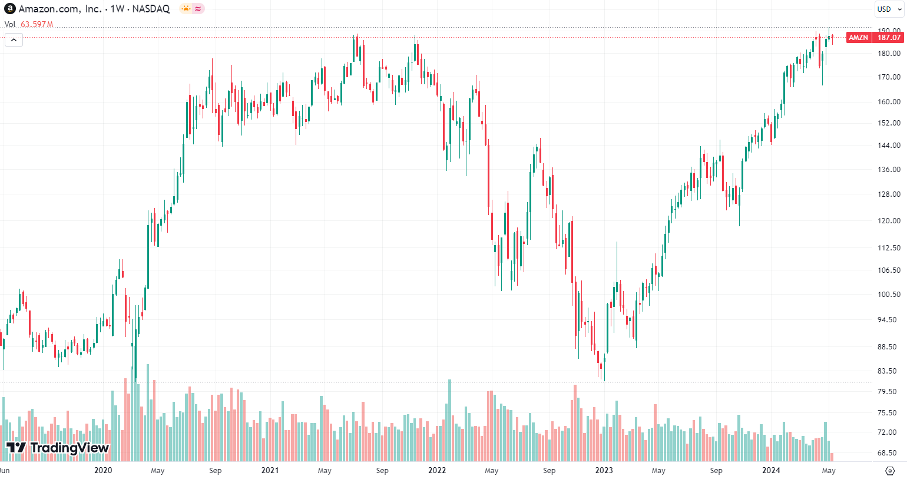
Performance of Amazon.com Inc. stock over 5 years. Source: tradingview.com*
Market implications of AWS' investment
This investment by AWS is poised to set new standards in the cloud computing industry, particularly in how data privacy is handled in the EU. The decision to set up data centres in Brandenburg by the end of 2025 reflects AWS' commitment to comply with EU regulations, potentially giving it a competitive advantage in attracting government and industry clients that require stringent data security measures. The construction of these data centres is expected to support an average of 2,800 full-time jobs per year in local German businesses, providing not only a technological investment but also a socio-economic boost for the region.
A potential trading strategy
From a trading perspective, this development could signal a bullish outlook for Amazon stock in the medium to long term. Establishing a robust infrastructure in the EU could expand AWS's service offering and potentially increase its European market share. In addition, AWS' collaboration with Germany's Telefonica to migrate one million 5G customers to its cloud platform further highlights its strategic initiatives in integrating telecommunications with cloud services, which could open new revenue streams. [2]
Risk assessment
However, the ambitious nature of this project is not without risks. The sheer scale of the investment and the long timeframe to 2040 introduce uncertainty, particularly in terms of regulatory changes and technological advances that could affect initial forecasts and outcomes. In addition, initial capital expenditures and ongoing costs could weigh on Amazon's financial results in the short term, which could impact its stock performance if not managed in line with investor expectations. [3]
Conclusion
As I continue to monitor Amazon and its subsidiary AWS, I will pay particular attention to how these developments affect its earnings reports and any changes in investor sentiment. For now, I remain cautiously optimistic and am considering increasing my position in Amazon stock, while keeping a close eye on emerging risks and market dynamics that could impact AWS's ambitious efforts in Europe.
This investment announcement could mark a pivotal moment for AWS in Europe and, consequently, for Amazon's global strategy. It's a development worth watching closely for any technology-focused trader or investor.
* Past performance is no guarantee of future results.
[1,2,3] Forward-looking statements are based on assumptions and current expectations, which may be inaccurate, or based on the current economic environment which is subject to change. Such statements are not guaranteeing of future performance. They involve risks and other uncertainties which are difficult to predict. Results could differ materially from those expressed or implied in any forward-looking statements.








